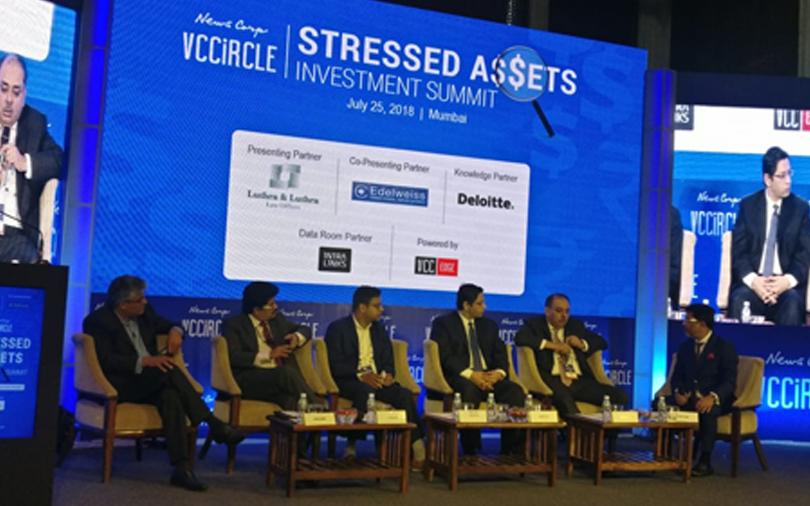Keeping the promoter out of the bankruptcy-resolution process will have short-term negatives but long-term benefits will far outweigh them, said panellists at the Stressed Assets Investment Summit organised by News Corp VCCircle on Wednesday in Mumbai.
The panellists unanimously agreed that the Insolvency and Bankruptcy Code (IBC) has brought a sea change to India’s non-performing asset (NPA) problem and that the past 18 months have been transformative for the Indian stressed assets sector, with three of 12 large bankruptcy cases resolved.
The first edition of the half-day summit opened to a packed house attended by key stakeholders – investors, promoters, banks, legal experts, regulators, asset reconstruction companies (ARCs) and insolvency resolution professionals.
The first panel at the summit discussed the provisions of the IBC, difficulties faced by ARCs, and the effectiveness of the Code in resolving NPAs.
The panel, moderated by Mohit Saraf, senior partner, Luthra & Luthra Law Offices, comprised of Parth Gandhi, managing partner, AION Capital; Uday Bhansali, president, financial advisory, Deloitte India; and Anurag Das, head, Blackstone India Stressed Assets Platform and CEO-designate, International Asset Reconstruction Co. Other panellists were S Salee, chief general manager, stressed assets management, State Bank of India (SBI); and Bikash Jhawar, partner, Luthra & Luthra Law Offices.
The panel observed that Indian banks are grappling with nearly $150 billion in bad loans. The enactment of the IBC has worked well in resolving some cases and the bankruptcy-resolution process could be improved, it added.
Under IBC, companies undergoing insolvency proceedings at the National Company Law Tribunal (NCLT) have a total of 270 days to settle on a resolution plan. The companies may opt for liquidation proceedings if no solution is reached within the time frame. IBC’s Section 29A prohibits promoter or related parties from bidding for assets under bankruptcy resolution.
Keeping the promoter out of the process will have short-term negatives but long-term benefits will far outweigh them, according to Das of Blackstone.
Section 29A of IBC is necessary to maintain discipline in the resolution process, said both Gandhi of AION and Salee of SBI. “IBC has changed the game for us (lenders) and has changed the balance in favour of the lender. After (Section) 29A, there is a sea change in attitude of promoters and they are now looking to help resolve the cases,” Salee said. “In the last 18 months, the stressed assets sector has seen a lot of action around IBC, but that did not translate into cash coming out of it. However, from this year, if I look at the last few months, we expect 80% to come out of the NCLT process alone,” Salee added.
Promoters bring a lot of value to the bankruptcy-resolution process and have faced sobering reality after losing control of their companies, he said.
According to Bhansali of Deloitte, this has been the biggest change is the mindset of the ecosystem — where previously a promoter losing his company was unheard of, now firms understand the implications of court orders and admission into the insolvency process.
The panel also observed that the mindset that a haircut only affects debt and not the equity value of the company is also dissolving.
Of the 12 large cases referred to NCLT, three have been resolved: Bhushan Steel Ltd, Electrosteel Steels Ltd, and Monnet Ispat and Energy Ltd.
According to Gandhi, the value of the asset depends on how the investor looks at it. While the large 12 cases have seen higher interest from strategic investors, the next set of cases is seeing more interest from financial investors, while the companies below that level will see interest from ARCs and financial investors, he said.
Like this report? Sign up for our daily newsletter to get our top reports.






